The Redwood Empire Bonsai Society hosted their 36th annual show last weekend in Santa Rosa, California.
Looking over the photos from this and past events reminded me of how much some trees have changed – or not changed – over the past eleven REBS shows I’ve visited (see the posts here).
More than anything, seeing these trees over time made me appreciate what the trees have to offer this year. Here are a few points that stood out to me this year, starting with a large Sierra juniper grafted with shimpaku foliage.
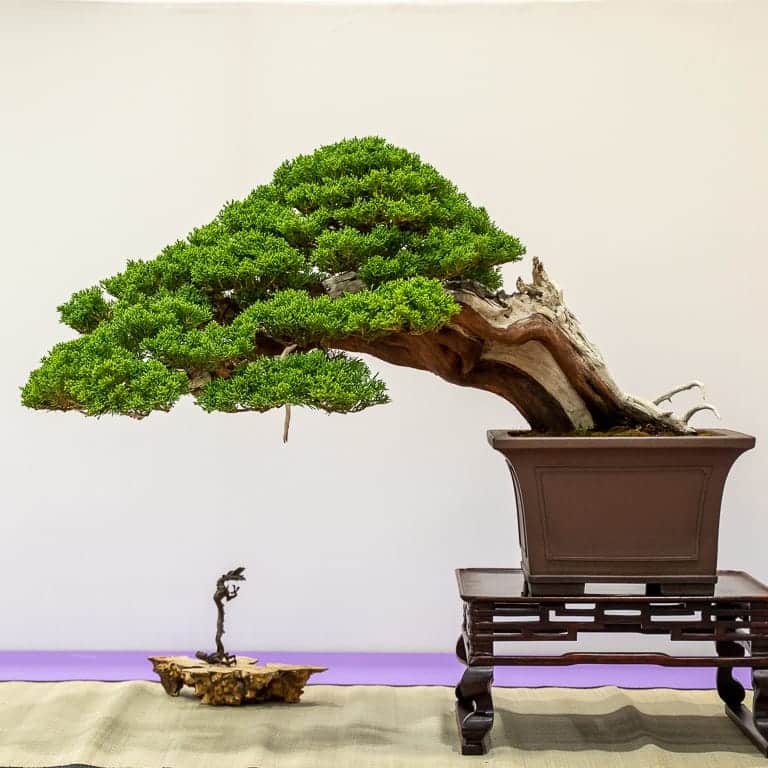
Sierra juniper grafted with shimpaku foliage
I’ve seen the above tree develop quickly over the years. When it first caught my eye this weekend, I was struck by how mature the branch pads are becoming. In addition to conveying their age through the deadwood and their experience through movement in the trunk, junipers can convey their training as bonsai in the structure of the branches.
An even better example of training conveyed by branch pad structure was a moss cypress styled by Peter Tea.
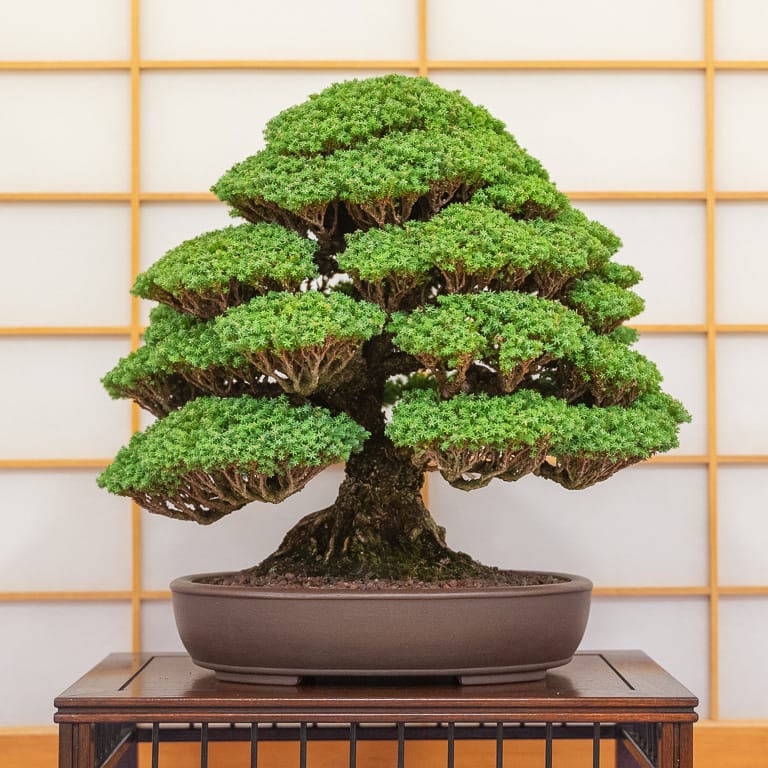
Moss cypress
This is one of the best examples of the species I know of and it’s a great tree to study if you’re developing branch pads on chamaecyparis pisifera, hinoki, cryptomeria, or needle juniper.
The variety of coast redwood bonsai in the show is an annual reminder of what can be done with the species. Redwoods can be successfully trained in the shape of miniature giant trees, in the form of actual size driftwood bonsai, or anything in between.
The redwood below has a strong trunk with gentle movement and taper. The soft redwood foliage provides a nice contrast to the stark deadwood. Although the proportions don’t resemble those of the tallest redwoods, the descending branch angles do a great job of suggesting the growth characteristics of larger trees.
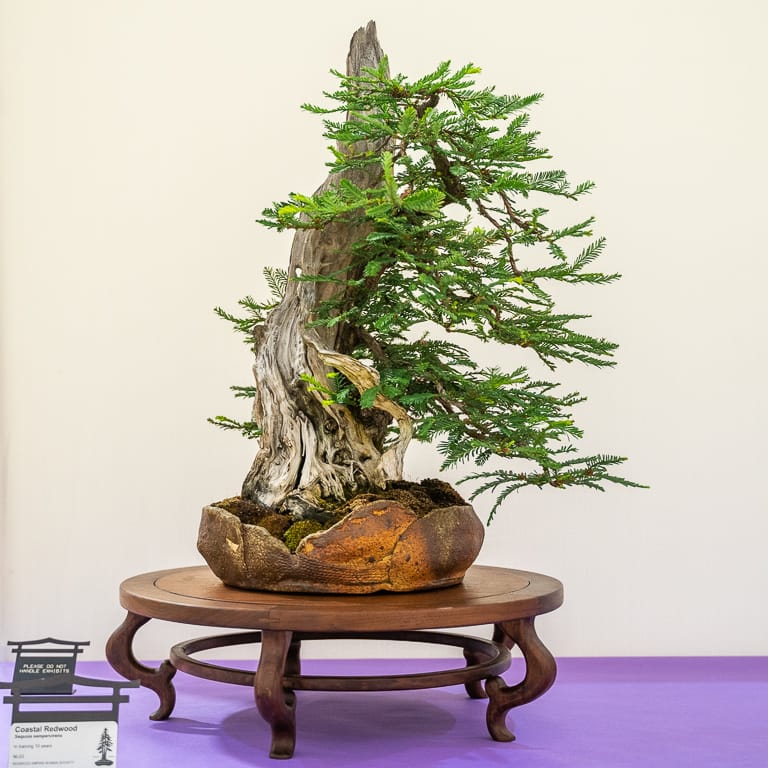
Coast redwood in a Jan Rentenaar pot
The coast redwood below is a good example of a sturdy, “bonsai” shaped tree. The silhouette is not unlike that of a pine bonsai, but the sparse foliage again mimics the gaps between branches on larger redwoods.
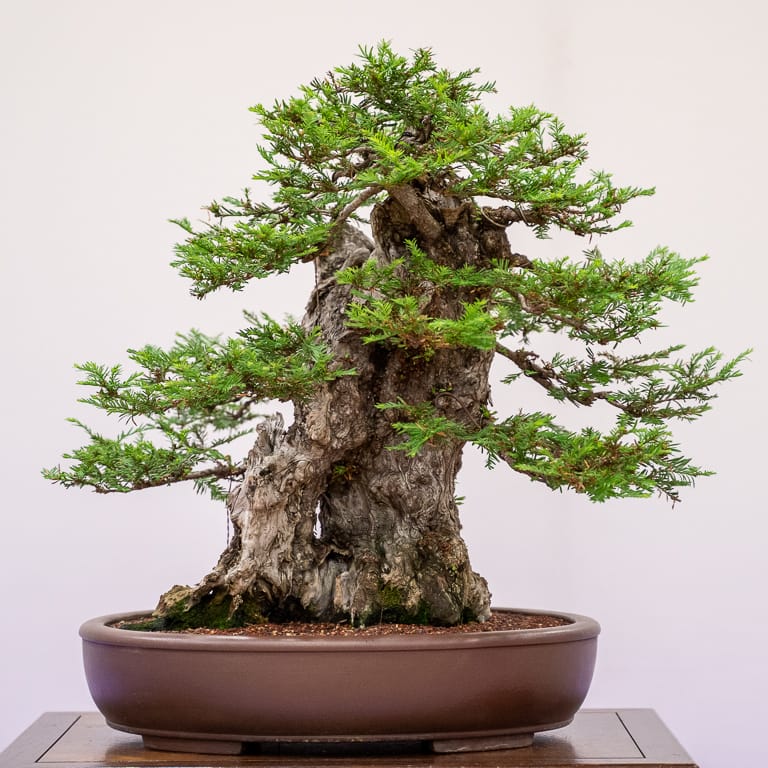
Bonsai-shaped coast redwood
Sometimes redwood bonsai don’t fit into established categories. The tree below features a slender trunk growing from a large burl.
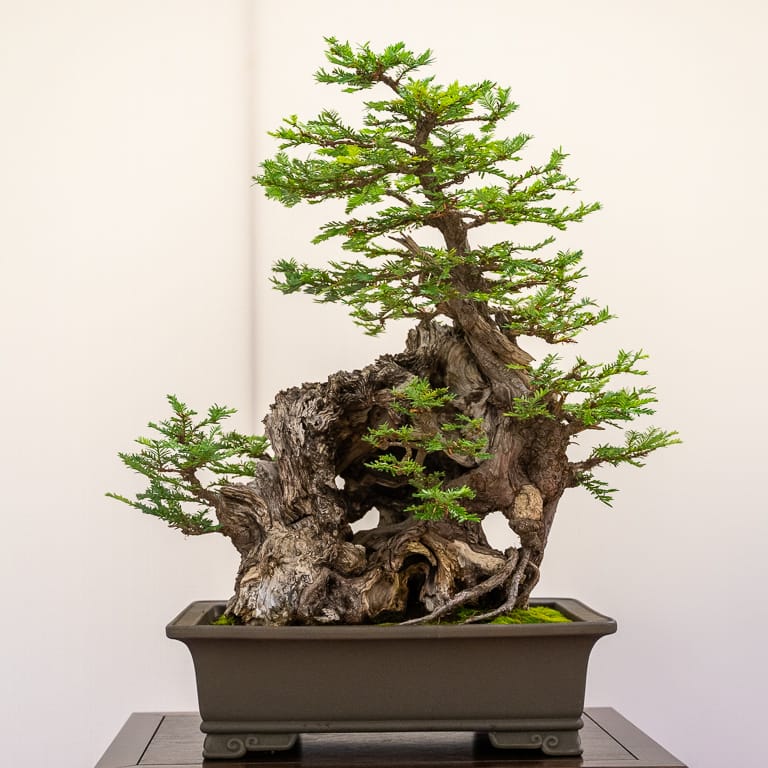
Coast redwood
Prostrata junipers can turn juvenile after a single trimming. To ensure that all of the foliage is mature for an exhibit, prostratas must be trimmed lightly in the months leading up to the show or pruned heavily and left to grow freely for up to one year after pruning. The prostrata below has a mature silhouette that reflects many years of training as a bonsai.
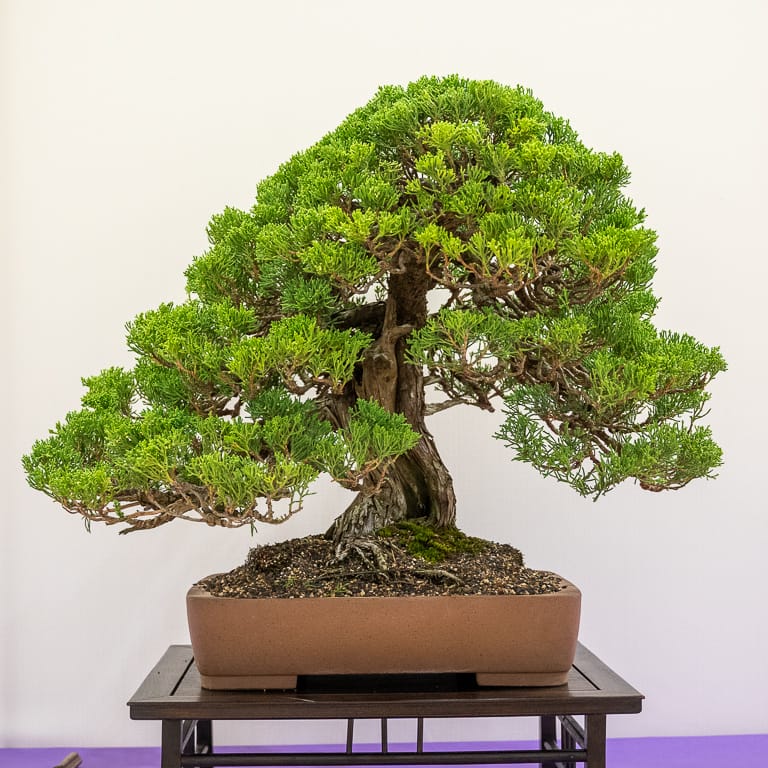
Prostrata juniper
Fine branches can develop quickly on hornbeam bonsai. The tree below does a great job of suggesting deciduous growth habits in that the branches are slender and rise upward with consistent angles. The even density from the top of the tree to the bottom reflects careful show prep.
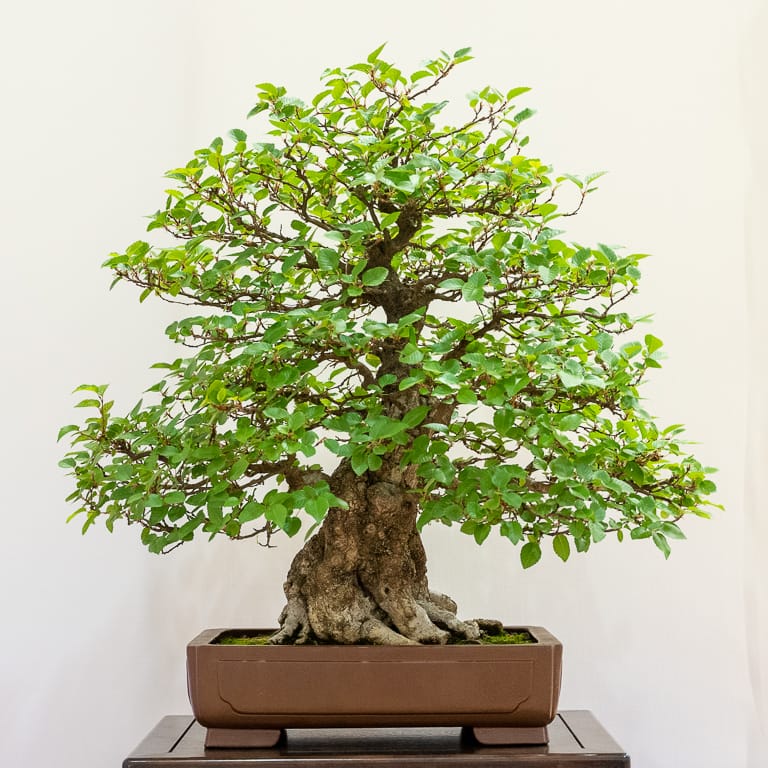
Korean hornbeam
I’ve long admired the trunkline of the cork oak below. It can be hard to find cork oaks with interesting movement and taper and this tree has both.
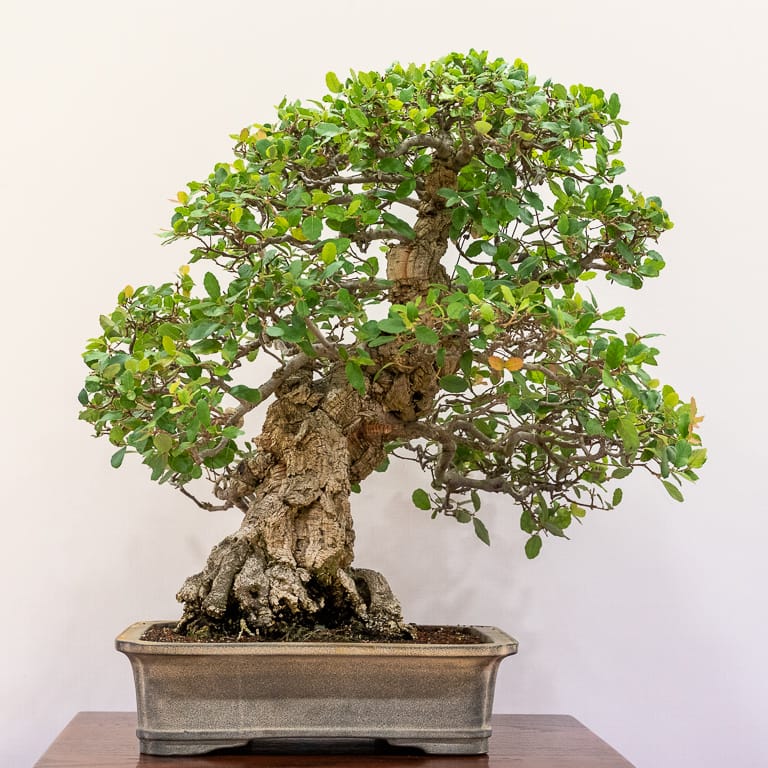
Cork oak
The cork-bark elm below is a good example of several features to look for in the species. The trunk is large and old which is good for showing off the craggy bark. The branch angles rise upward which suggests the natural growth patterns of elms, and the slender branch size makes the trunk look bigger. The round silhouette reinforces the idea that this is not a young tree.
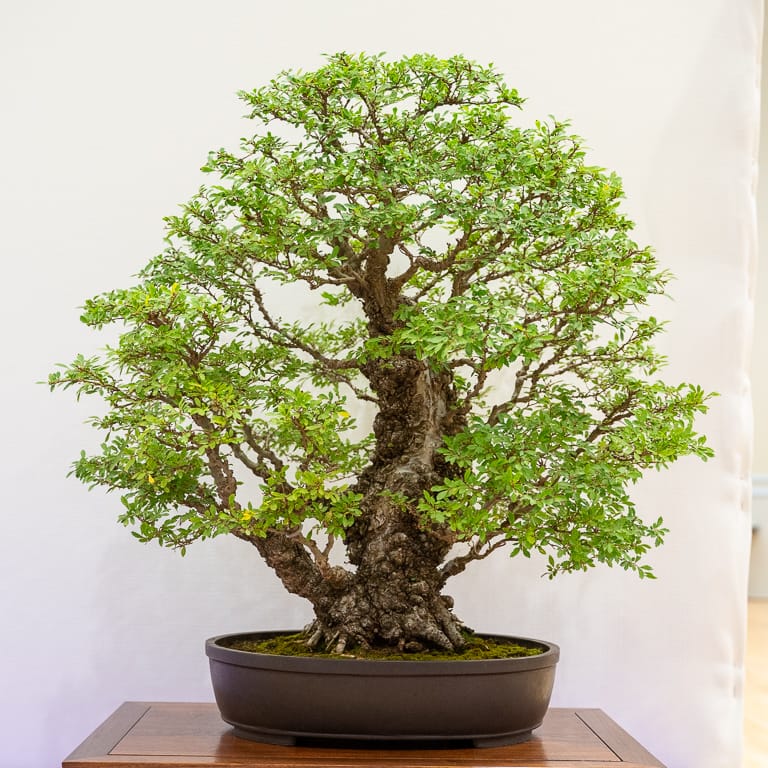
Cork-bark elm
I could say much of the same for the cork-bark elm group planting below.
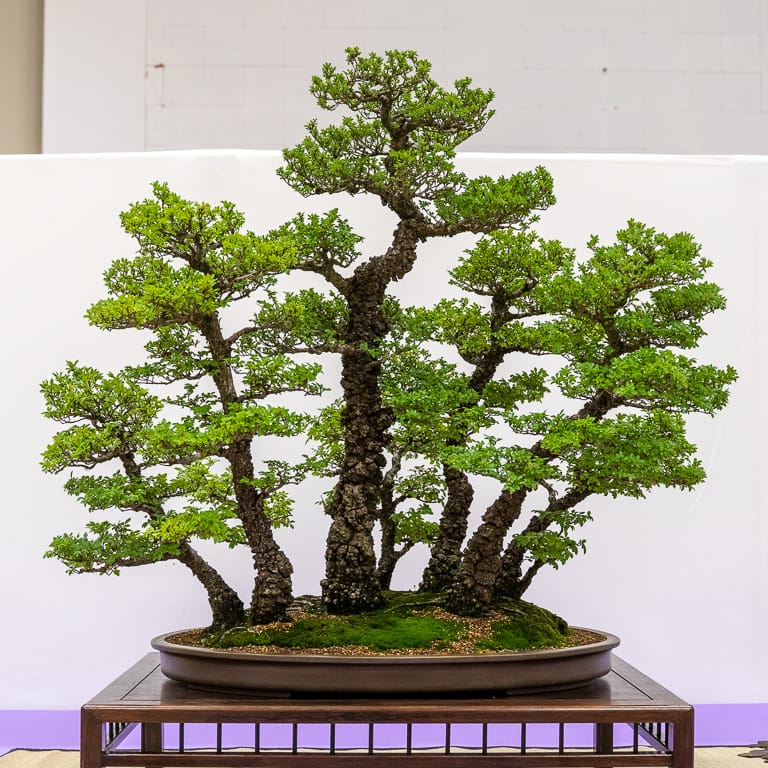
Cork-bark elm forest
The shimpaku bonsai below is what’s known as a “tanuki.” A tanuki – Japanese raccoon dog in English – is known as a shape-shifting master of illusion or a trickster in Japanese folklore. Tanunki bonsai are created by training young trees to grow around a dead tree or branch to create the illusion of an old tree with deadwood.
Although the deadwood on this tanuki doesn’t suggest natural shimpaku branch movement, the combination is familiar to many in California who have grafted shimpaku onto California or other domestic juniper species.
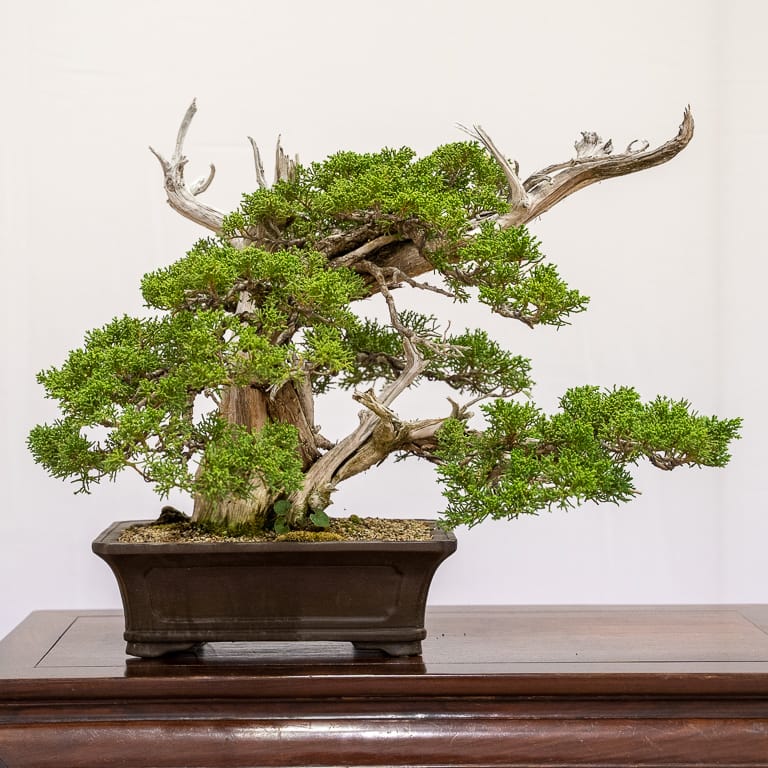
Shimpaku tanuki
Subscribe to Bonsai Tonight
New Posts Delivered Every Tuesday and Friday
Mark s. Donnelly says
This was our 1st time to the show. My wife and I met you Sunday and spoke about the juniper trail at Carson pass you told us about. Loved all the redwoods in the show. I have a cork bark elm that was given to me as my 1st bonsai. Would love to see a picture of the forest of cork barks if you have one, it was beautiful. Glad you told us of your web sight I will be checking it out. Mark.
Jonas Dupuich says
Hi Mark – I’m glad you enjoyed the show! I just updated the post with a photo of the cork-bark elm forest – thanks for writing!
Penny Pawl says
wonderful trees. I love the tanuki. Is it from the convention workshop many years ago with Mike Page. I still have mine.
Jonas Dupuich says
Thanks Penny! I don’t know where the juniper got started – maybe someone will comment and let us know.
Michael says
Hello Jonas, I am a member of the REBS club in Santa Rosa and I put together this tanuki about 10 or 12 years ago. The original whip had two long runners coming out of a common trunk. One runner runs along the lower branch and the second runner goes up the left side and along the upper branch. A couple bits have been allowed to run to the back side as fast as they could and provide depth to the composition. I just have to remember to glue a little bark on the one stainless steel screw that can be visible from the front before it is shown. I try to keep the dead wood out of the wet soil and it is supported by a section of PVC pipe underneath. It has been a fun project.
Thanks for the notice.
Jonas Dupuich says
That’s great Michael – thanks for the backstory! Do you know what kind of tree the deadwood is from?
DIPAK DIXIT MEHTA says
Excellent
Michael says
Michael here, It was either California or Sierra Juniper, not sure which.
Jonas Dupuich says
Thanks Michael!
Yash says
So beautiful
David Wheeler says
…..once again Jonas, thank you so much for sharing your photos of amazing examples of what is possible……
Thank you
Jonas Dupuich says
Thanks David – I appreciate it!
Mark Powell says
How long do I let the second growth go on. Black Pine
Jonas Dupuich says
Hi Mark – could you post the question with a few more details and a photo to the forum?
https://ask.bonsaitonight.com/
Thanks!